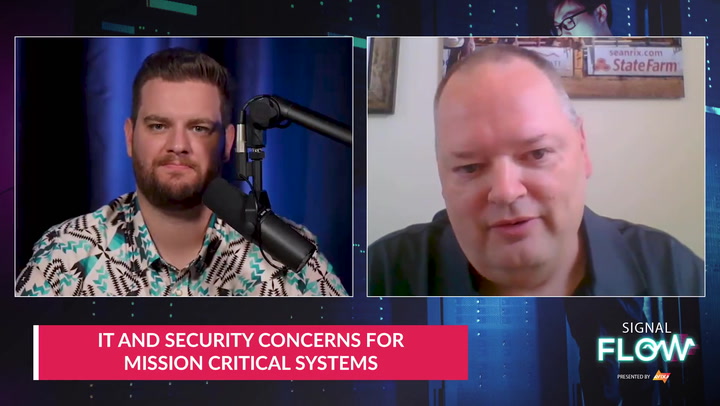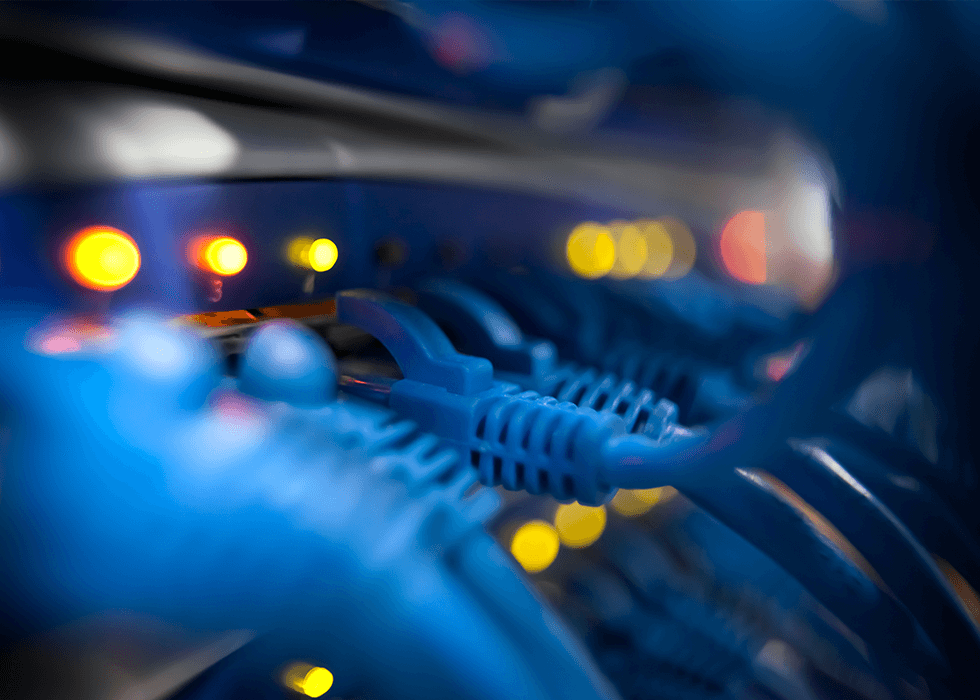
IoT Security Solutions in Smart Office Environments
Smart office technology is reshaping the workplace by integrating automation, efficiency, and connectivity through the Internet of Things (IoT). Devices like occupancy sensors, smart thermostats, and integrated data systems are streamlining operations and enhancing productivity. Every connected device, however, brings with it an entry point for cyberthreats. As offices become more connected, organizations must balance the efficiency benefits with strategic steps for managing the security risks.
Importance of IoT Security Solutions
Smart offices rely on connected devices to automate tasks, boost comfort, and drive productivity. These devices communicate over shared networks and often lack the processing power to support strong security, making them vulnerable entry points. Constant data transmission and autonomous operation further increase risk. As smart office technology grows more sophisticated, IoT security must advance in lockstep to prevent breaches, unauthorized access, and operational disruptions.
A recent high-profile example highlights the risk: In 2025, a misconfigured IoT database from Mars Hydro and LG-LED Solutions exposed 2.7 billion records, including Wi-Fi credentials and device IDs. This kind of exposure can give attackers a direct path into enterprise networks. Research by Palo Alto Networks found that 57% of IoT devices are highly vulnerable due to outdated operating systems or a lack of encryption. Even simple missteps can lead to massive breaches, making it essential to implement strong security protocols and regularly update all connected devices.
Understanding IoT Security in Smart Offices
Securing a smart office involves navigating a complex environment where various IoT devices interact continuously within a shared network. This environment introduces unique security dynamics that require an understanding of the devices themselves and the risks they pose.
IoT Devices and Their Impact
Smart offices incorporate IoT devices that automate mundane tasks, enhance energy efficiency, and improve the workplace experience. These devices can include the following systems and components:
- Smart Thermostats: These devices automatically adjust heating and cooling systems based on occupancy patterns and user preferences to enhance comfort and reduce energy consumption.
- Lighting Systems: These systems respond dynamically to presence, time of day, and ambient light levels, which helps reduce energy costs while ensuring well-lit workspaces.
- Printers and Scanners: These devices allow for remote access and usage tracking for document management while streamlining workflows.
- Occupancy Sensors: These sensors monitor space usage in real time, switching systems on and off based on occupancy and utilization.
- Security Cameras and Access Control Devices: These systems offer real-time monitoring and controlled building entry to bolster physical security.
These and other systems that operate on the IoT network offer convenience and cost savings, but provide minimal security controls, which makes them susceptible to cyber threats.
Security Risks in Smart Office Environments
As reliance on IoT systems grows, so does the organization’s attack surface. Many of these devices lack encryption, proper authentication protocols, and firmware updates, which can compromise the organization’s security posture through:
- Unauthorized Access: Weak or default credentials can allow attackers to gain unauthorized control over devices, compromising network integrity and potentially exposing sensitive systems to external threats.
- Data Breaches: When IoT devices transmit data over unencrypted channels or store data insecurely, they open the door to interception and leakage of confidential business or personal information.
- Device Manipulation: Hackers may exploit vulnerabilities to take control of devices, using them to disrupt operations, launch distributed denial-of-service (DDoS) attacks, or access sensitive areas of the network.
IT leaders must recognize these vulnerabilities and take proactive steps to secure their smart office environments.
Key Challenges in IoT Security
The complex landscape of IoT devices in modern offices presents security challenges that stem both from the devices themselves and the data they generate. Addressing these challenges requires an understanding of where these vulnerabilities exist and how data privacy issues impact organizational trust and compliance.
Device and Network Vulnerabilities
Designed with cost and simplicity in mind, many IoT devices lack the appropriate security measures. This can result in outdated software, hardcoded credentials, and weak authentication methods. As a result, smart offices may be exposed to critical vulnerabilities, such as:
- Lack of Patch Management: Many IoT devices do not support updates or are too infrequently updated, leaving known vulnerabilities unpatched and available for exploitation.
- Insecure Interfaces: Web, mobile, and cloud interfaces tied to IoT devices may lack sufficient encryption or access controls, making them easy targets for attackers seeking a way into the network.
- Limited Processing Power: Due to their minimal computing resources, many IoT devices are unable to support advanced security features like encryption or endpoint protection, increasing their vulnerability.
These gaps can significantly jeopardize the entire office network even if a single device is compromised.
Data Privacy Concerns
The data generated by smart office devices can reveal patterns about employee behavior, workspace usage, company operations, and other critical information. When not properly governed, data from these devices can compromise individual privacy and operational security in the following scenarios:
- Unregulated Data Collection: IoT devices may collect unnecessary data, often without the user’s knowledge. This can lead to overexposure of employee or operational information.
- Inadequate Storage Protections: When data is stored on unsecured servers or poorly configured cloud environments, personal and organizational data can become vulnerable to breaches and unauthorized access.
- Third-Party Access: Vendors managing IoT platforms may have visibility into sensitive data, raising concerns about how that data is used, shared, and secured externally.
Respecting data privacy is a major imperative for employees and clients alike and must be part of an organization’s data privacy compliance mandate.
Implementing IoT Security Solutions
Securing a smart office goes beyond firewalls and passwords to include creating an ecosystem that anticipates threats, responds in real time, and embeds protection into every layer. From evaluating vulnerabilities to designing smarter systems and responding swiftly to attacks, IoT security demands a proactive mindset that covers the three core of creating a strong IoT defense strategy –assessing risk, designing securely, and monitoring continuously.
Risk Assessment and Management
The first line of defense in any IoT security strategy is understanding the specific threats devices on the network face. Risk assessment provides the foundation for informed decision-making and ongoing threat mitigation.
Before smart office devices can be secured, organizations need a full understanding of their risk exposure. Conducting a risk assessment creates a roadmap to identify, analyze, and prioritize threats, making it easier to deploy effective safeguards. The assessment should include these three key areas:
- Asset Inventory: Organizations should catalog all IoT devices in use, detail their function, network connections, and known vulnerabilities to create a complete security baseline.
- Threat Modeling: Teams should identify how each device could be exploited and evaluate the likelihood and potential impact of those threats on business operations.
- Vulnerability Scanning: Regular automated scans should be conducted to identify outdated firmware, exposed interfaces, and misconfigurations that may leave systems open to attack.
Risk management is not a one-time event; It must be a regular, ongoing process.
Security-by-Design Approach
Designing security into systems from the ground up gives organizations a crucial advantage. Rather than retrofitting protections after deployment, a security-by-design mindset embeds safeguards directly into the architecture of each device and system to minimize vulnerabilities to afford these benefits:
- Built-In Protections: Devices that include encryption, access control, and secure boot mechanisms from day one are inherently more resilient to compromise and manipulation.
- Long-Term Cost Savings: Implementing security features early prevents the need for expensive retrofits or damage control after a breach, improving ROI and business continuity.
- Better Compliance: Devices designed with security in mind are more likely to meet regulatory and industry standards, reducing the risk of fines and reputational damage.
Manufacturers, developers, and IT teams should collaborate to implement secure design principles early in the deployment lifecycle.
Real-Time Monitoring and Incident Response
Real-time monitoring and rapid response protocols are essential for detecting, isolating, and neutralizing threats before they compromise critical infrastructure. With constant device connectivity, real-time monitoring becomes essential to detect suspicious behavior and stop threats before they spread. It should include these components:
- Intrusion Detection Systems (IDS): These systems analyze traffic patterns and device behavior in real time to identify potential intrusions and alert IT teams to take action.
- Automated Alerts: Configuring alerts for unusual activity ensures that security teams can respond immediately to potential incidents before they escalate.
- Incident Response Plans: Having a predefined plan with roles, escalation paths, and remediation steps ensures rapid containment and recovery when an attack occurs.
These efforts not only defend against current threats but also prepare the organization to face the evolving tactics of increasingly sophisticated cyber adversaries.

Policy and Governance for IoT Security
IoT security must go beyond implementing technological solutions for cybersecurity. It must also include governance frameworks to ensure the development and compliance to achieve sustainable protection across the smart office environment.
Developing Security Policies
Creating security policies provides organizations with a structured approach for governing IoT device usage and data management. The policies should include ensuring the following procedures and processes:
- Access Controls: Policies should explicitly define who can install, configure, and monitor IoT devices, preventing unauthorized alterations and reducing the risk of human error.
- Device Management Protocols: Standard procedures for device onboarding, firmware updates, and decommissioning ensure consistency and minimize exposure to security gaps.
- Employee Training: Regular training programs keep staff informed about emerging threats and best practices, turning employees into proactive defenders rather than potential weak links.
Well-defined policies must be revisited periodically to adapt to evolving technologies and threat landscapes.
Regulatory Compliance and Best Practices
Adhering to relevant laws and adopting industry best practices reinforces organizational credibility and mitigates legal and financial risks associated with data breaches. Organizations should ensure compliance, as appropriate, with the following regulations, frameworks, and procedures:
- GDPR (General Data Protection Regulation): Requires transparent handling of personal data and empowers individuals with rights over their information.
- CCPA (California Consumer Privacy Act): Grants California residents control over their data, mandating strict data handling and privacy disclosures.
- NIST (National Institute of Standards and Technology) Cybersecurity Framework: Offers flexible guidelines for identifying, protecting, detecting, responding to, and recovering from cyber incidents.
- CMMC (Cybersecurity Maturity Model Certification): Designed for defense contractors, it helps ensure that companies working with the Department of Defense (DOD) have adequate cybersecurity practices in place to protect sensitive information from cyberthreats.
- Regular Firmware Updates: Ensuring devices receive timely security patches prevents exploitation of known vulnerabilities.
- Network Segmentation: Isolating IoT devices from critical systems limits the impact of a single compromised device.
- Vendor Vetting: Evaluating suppliers for security certifications and transparent data policies strengthens overall supply chain security.
Ongoing compliance and the use of best practices can transform corporate security mandates from a list of to-dos into a proactive framework for long-term IoT resilience, throughout the IoT device lifecycle from procurement to decommissioning.
Recap of IoT Security Solutions
Securing IoT devices in smart office environments demands a comprehensive approach built on strategic planning, thoughtful design, and ongoing oversight. As organizations integrate IoT technologies into their operations, they must navigate a range of challenges and take proactive steps to safeguard their systems and be mindful of the following considerations:
- IoT Devices Add Efficiency and Vulnerabilities: They streamline processes and improve workplace experiences, but also introduce significant security challenges that require dedicated solutions.
- Security Challenges Are Unique: Each smart device adds complexity and risk to the network, necessitating specialized protections and continuous vigilance.
- Proactive Measures Are Critical: Implementing security during the design phase and maintaining real-time monitoring greatly reduces exposure to evolving threats.
- Governance Supports A Solid Defense: Developing policies, ensuring compliance, and regularly training employees builds a strong foundation for long-term IoT security.
The IoT security landscape is continuously evolving. Organizations must stay informed, adapt to emerging threats, and continuously refine their strategies to fully harness the benefits of smart office technologies while maintaining the safety of their operations and data.









